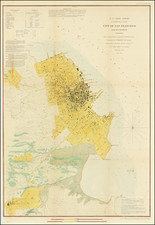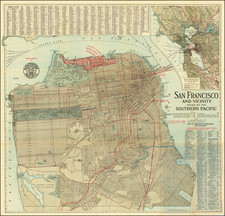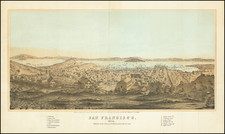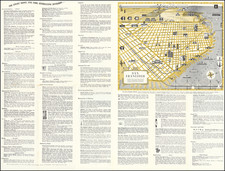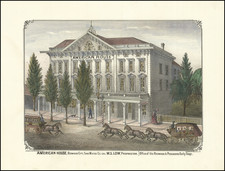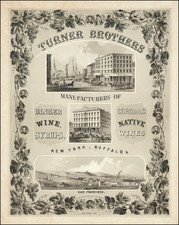The Gold Rush Fleet at San Francisco in June of 1849.
This 1886 bird's-eye view of San Francisco, drawn by Henry Firks, updated by a "committee of pioneers", and lithographed by Max Schmidt, offers a detailed depiction of the city during a pivotal moment in its history. The view is notable for its detailed recording of ships in the harbor and key landmarks, reflecting the bustling activity of San Francisco at the height of the Gold Rush.
In June 1849, San Francisco was at the height of the Gold Rush. The discovery of gold at Sutter's Mill in 1848 had triggered a torrent of thousands of prospectors, merchants, and adventurers to flood into the region. This view captures the essence of San Francisco on the cusp of being transformed into a hub of commerce and migration. The detailed listing of ships, including American, British, Danish, and French vessels like the Grey Eagle, Sea Queen, and Panama, underscores the breadth of the Rush.
The view's attention to local landmarks, such as Parker's Hotel, City Hotel, and the Catholic Church, provides a snapshot of the city's nascent infrastructure. The presence of the U.S.S. Warren and the U.S.S. Southampton highlights the U.S. military's role in the region during this period.
Henry Firks' view offers insights into the urban and social landscape of San Francisco at the outset of the Gold Rush. It portrays a city in transition, grappling with rapid growth and the challenges of establishing a civic and economic infrastructure amid a flood of immigration and economic opportunity.
States
Firks's views were reissued repeatedly throughout the 19th century. According to Reps and Peters, this edition, with corrections by Sherman, Davis, and Vassault, was lithographed by Max Schmidt in 1886 after he had worked for G.T. Brown and Otto Schoering and then the Korbel Brothers.
The Schmidt Lithography Company was based in San Francisco. Max Schmidt, a German immigrant, founded his first printing business in 1873, and he was one of the first printers to use lithography on the West Coast. His plant burned twice, in 1884 and 1886, but by the 1890s he ran a factory in San Francisco, as well as branches in Portland and Seattle.
During the 1906 earthquake and fire the company’s premises were destroyed again. Schmidt quickly acquired a nearby paper factory and production continued practically uninterrupted. Within two years of the fire, Schmidt had rebuilt on the site of his former factory at the corner of Second and Bryant Streets.
Schmidt’s company was best known for its printed labels, but they also produced other items like separately-issued prints. The company was once the largest printing company on the West Coast and today they are remembered for the clock tower that still stands at Second and Bryant Streets.









